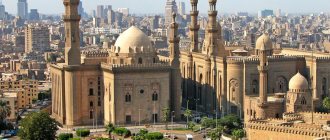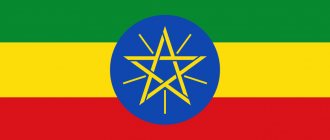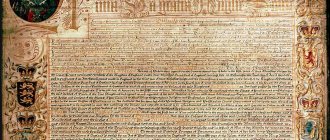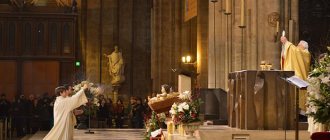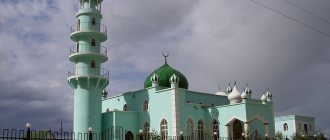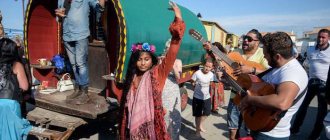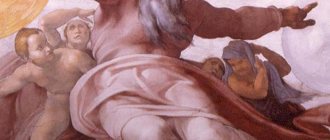When the Apostle Paul came preaching to the Hellenic lands, among other man-made structures he saw an altar to the Unknown God. Speaking in the Areopagus, God's messenger said: It is this revered, but still unknown to you God, that I preach. The conversion to Christianity of a people who nurtured the cult of idolatrous gods and left the world a huge cultural pagan heritage is a rare case in history when a cultured and mostly educated people were sanctified by the light of the Gospel truth.
Greece is an Orthodox country in its culture, history, and religious choice. Modern Greeks consider themselves heirs to the traditions of Christian Byzantium. 98% of the country's population are Orthodox Christians. The Greek (officially Greek) Orthodox Church is one of the most influential and the third largest in the number of believers in the Orthodox world. And Greece is the only country in which Orthodoxy is enshrined in the Constitution as the state religion. The church plays an important role in Greek society, and faith is an integral part of the culture.
Baptism in this country is considered mandatory. Marriage is not recognized by the state if it is not married. Religious holidays have been elevated to the rank of state holidays. And a birthday for a Greek is a less important event than a name day. Professional holidays are celebrated on the day of remembrance of the patron saints of professions.
The Birth of Orthodoxy in Greece
Christianity in Greece began to spread from the middle of the 1st century AD thanks to the efforts of the Apostle Paul. He arrived in the Macedonian harbor of Naples, and then went to the territory of the neighboring town of Philippi. From there he began his journey of Christian preaching. On the day that Saint Paul first addressed the inhabitants of Philippi, one of the rich townspeople named Lydia accepted baptism and persuaded all members of her family to accept it. It was Lydia who became the first Christian in Greece.
The history of Greek beliefs indicates that by the beginning of the 2nd century Christian communities already existed in Athens, Thessalonica, Corinth, Achaia and other large cities. By this time, in the Hellenic lands, together with Paul, the apostles Luke, John the Theologian, Andrew the First-Called, Procopius, Barnabas and Mark read sermons.
For about 300 years, Christians in Greece were persecuted. Only with the deepening of the schism of the Holy Roman Empire, which included the Hellenic lands, at the beginning of the 4th century, did the prerequisites arise for the establishment of the Christian faith within their borders.
The question naturally arises about the years when Greece adopted Christianity. The conditions for this began to develop during the reign of Constantine the Great (306-337). According to legend, the emperor, going into battle in 312, saw the image of a cross in the sky and heard the words “By this victory.” Constantine defeated Maxentius in battle, and the following year over Licinius, and became the sole ruler of the Roman Empire.
The emperor believed that his success was due to the intercession of the Christian God. Therefore, in 313, he issued the Edict of Toleration (Edict of Milan), which protected Christians from persecution. In 330, Constantine the Great moved the capital of the empire from Rome to Constantinople and declared that pagan cults would never again be practiced in the territory of this city.
In 380, during the reign of Emperor Theodosius, Christianity was proclaimed the religion of the Byzantine Empire. Thus, this faith became dominant in the Hellenic lands, which were then part of Byzantium.
Orthodoxy was established in Greece through complex means. Thus, by the 8th century, religious disputes between the Patriarch of Constantinople and the Pope intensified. They concerned the right of priests to marry, the peculiarities of observing fasts, the wording of prayers, the language of worship and other aspects. The result of these contradictions was the split of Christianity in 1054 (Great Schism) into Orthodoxy and Catholicism. The first became the dominant religion in the east of the Byzantine Empire, which included the Greek lands, the second - in the West (with its center in Rome).
Orthodox Christianity has existed as the official religion in Greece since June 11, 1975. On this day, the constitution of the modern republic was adopted, on the pages of which Orthodoxy is enshrined as the state faith.
The beginning of the Christianization of Hellas
It is known from the New Testament that the light of the Christian faith was brought to the Greek land by the supreme apostle Paul in the 1st century. Before his appearance in these parts, the state religion of Greece was paganism, and the inhabitants of the country, which had a rich cultural heritage, desecrated themselves with idolatry. The holy evangelist spent many years among them, preaching the teachings of Christ.
The Greeks very keenly accepted the new teaching for them, and in many areas where the Apostle Paul preached, after his departure the Christian communities he created remained. It was they who subsequently gave impetus to the spread of Christ’s teaching throughout the European pagan world.
What religious holidays are celebrated in Greece
The Greeks are considered a pious nation. Church holidays are among the most revered for citizens of the country. On December 25th in Greece it is customary to celebrate the Nativity of Christ. Everywhere people decorate Christmas trees, godparents accompany godchildren to church services. Traditionally, festive tables are set, where the main dishes are pork with celery and turkey.
Greek Orthodoxy also includes the celebration of Epiphany, which falls on January 6th. The population gathers for a liturgy, after which the water is blessed. According to tradition, the clergyman throws a cross into the river, and the men jump into the pond after him. Whoever finds the shrine will be recognized as the hero of the holiday.
Lent lasts until mid-February in Greece. And then Apokries begins - an analogue of Russian Maslenitsa.
Great religious holidays in Greece include Easter. It is celebrated in April–May. This is a family celebration that is celebrated differently in different regions of the country. Eg:
- on the island of Santorini in the village of Pyrgos, local residents organize a colorful religious procession;
- on the island of Corfu, the population throws painted clay pots out of windows as a sign of deliverance from sins and troubles;
- On the island of Hydra, people perform a ritual of burning an effigy of Judas.
On August 15, Greece celebrates the Dormition of the Virgin Mary. On this day, girls burn wreaths woven on the holiday of labor and flowers - May 1st. It is generally accepted that this helps every representative of the fair sex maintain the purity of their souls.
On September 8, Greeks celebrate the Nativity of the Mother of God. The Orthodox faith in Greece commands all believers to attend church on this day. In addition, for the holiday, thousands of childless women from all over the world come to the Tsamya (Tsamya) monastery, located on the island of Rhodes. They, climbing almost 1,500 m on their knees and elbows, ask God to send them babies.
In mid-September, the Greeks celebrate the Exaltation of the Cross. It completes the annual cycle of great church holidays.
Pentecostals ─ who are they, why are they dangerous and what are their characteristics?
Currently, in Greece, as well as throughout the world, various mystical teachings are very popular. The most widespread among them is Pentecostalism. This movement cannot be called a religion, since according to a number of characteristic features it is a sect. Having broken away from the Protestant Church of America at the beginning of the 20th century, Pentecostals have since professed their own teachings, which on a number of issues diverge from Christian dogma, and practice rituals completely alien to church canons.
Members of the sect place particular emphasis on the so-called Baptism of the Holy Spirit - a rite based on the Christian dogma of the descent of the Holy Spirit on the apostles, but having a form that is deeply alien to church tradition. It consists in the fact that during prayer meetings, all those present are put into a state of trance, during which they lose their sense of reality and begin to make incoherent sounds (glossolalia), close in their phonetic structure to human speech, but devoid of any meaning.
Holy places of Greece
Greece is rightfully considered a stronghold of Orthodoxy, and pilgrimages to Greek holy places do not lose their relevance. Both true believers who want to venerate Christian shrines and art connoisseurs who want to see the greatest masterpieces of architecture with their own eyes strive to visit the monasteries and Orthodox churches of Greece.
Famous pilgrimage centers
Among the holy places of Greece, to which tens of thousands of travelers and Orthodox believers flock every year, the following are especially popular:
- Holy Mount Athos on the island of Halkidiki. Here there is a monastic republic with a male population, which is the only one of its kind. Today there are about 20 active monasteries on Mount Athos.
- Monastery of St. John the Theologian in Suroti. It is also known as “female Athos”. The Venerable Elder Paisiy Svyatogorets, the founder of the monastery, who is deeply revered by all Orthodox Christians, is buried here.
- White marble Cathedral of St. Andrew the First-Called in the city of Patras. The building houses the Honest Head of the Apostle and the remains of the cross on which he was crucified. There is a holy spring near the temple.
- Parthenon in Athens. Originally built as a pagan shrine, in the 5th century AD it became the Orthodox Church of the Holy Wisdom. Later it was named in honor of the Blessed Virgin Mary. But in the 13th century, representatives of the Catholic Church established their protectorate over the Parthenon and renamed it North Dame d'Atain.
- Thessaloniki. This city is home to the Metropolitan Cathedral, which houses the relics of one of the great fathers of the church, Gregory Palamas. Also in Thessaloniki is the basilica of the patron saint of warriors - the Great Martyr Demetrius of Thessalonica.
- Crete. The Main Apostolic Cathedral of the island houses the Honest Head of the Apostle Titus, a disciple of St. Paul, who founded 9 Orthodox dioceses. Pilgrimage tours to Crete are also organized for those wishing to visit the monastery of Panagia Paliani. Within its walls is an icon of the Mother of God, on which a painted tree began to sprout and take root, hiding the face of the Mother of God with its branches.
- Patmos. This is the island on which God's revelation appeared to John the Theologian. There are over 50 Orthodox monasteries and churches here.
This is not a complete list of holy places in Greece. Pilgrims will certainly be interested in the convent of Pantocrator-Pantocrator on the island of Corfu, monastic buildings in Meteora, the Golsky Monastery in Sparta, the Philerim Monastery on the island of Rhodes and many other shrines.
"Unknown languages"
With this ritual, Pentecostals reproduce the episode given in the first chapter of the book “The Acts of the Holy Apostles,” the author of which is considered to be the Evangelist Luke. It describes how, on the fiftieth day after the resurrection of Jesus Christ, the Holy Spirit descended on His disciples, gathered in the Zion Upper Room in Jerusalem, in the form of tongues of fire, after which they acquired the gift, preaching the Word of God, to speak in languages previously unknown to them.
Members of the sect believe that in the process of the ritual they perform they receive a gift similar to the one that was bestowed upon the apostles when the Holy Spirit descended on them. The proof, in their opinion, is the above-mentioned glossolalia, which sectarians pass off as involuntary speech in languages unknown to anyone.
Are there differences between Greek and Russian Orthodoxy?
Greek and Russian Orthodoxy are two branches of the same religion. There is no difference between them in dogmas and canons, which cannot be said about church life, rituals, and the order of worship. Let's take a closer look at how the Greek Orthodox Church differs from the Russian Church:
- In Greece, the church, unlike Russia, is endowed with state status. She maintains close cooperation with public structures. The traditions of Greek church courts have not yet been lost.
- The requirements for Greek clergy are more stringent than for Russians. Thus, Greek Orthodoxy excludes the ordination of a person who has entered into premarital relations, entered into a second marriage, or is divorced.
- Siesta lasts from 13.00 to 17.00 in Greece. It is not customary to come to church at this time. Parishioners are expected to attend Vespers from 17.00 or 18.00. In Russia, the doors of the church are always open.
- In Greek churches, unlike Russians, they do not place candles in front of icons. Candles are located next to the hoods in the vestibules.
- There are differences in the church hierarchy. If in the Russian Orthodox Church the metropolitan is higher than the archbishop, then in the Greek it is the other way around.
- The peculiarities of religion in Greece stipulate that it is necessary to take communion every Sunday, and to confess several times a year. Parishioners of the Russian Orthodox Church come to communion less often.
- The ritual of worship in a Greek temple is much more democratic and simpler than in a Russian one.
- The duration of the liturgy in the Greek Orthodox Church often does not exceed 1.5 hours. In Russian, on the contrary, worship can last more than 3 hours.
- The first part of the liturgy (proxomidia) in a Greek church is carried out on one prosphora (liturgical bread), and in Russian - on 5.
- Unlike Russia, in Greece there are no women in church choirs.
Also, Greek priests have slightly different clothing: the chasuble does not have a neck prominence, and the kamilavka has a rim on top. In addition, clergy of the Russian Orthodox Church always - even outside the church - wear crosses over their robe. Greek priests wear crosses only before bishops' services.
Russian Orthodox churches in Greece
The Russian-speaking Orthodox community in Greece has its own official parishes and churches. Among the most famous:
- Trinity Church (Athens);
- Church of St. Seraphim of Sarov (Piraeus);
- Church of St. Olga Equal to the Apostles (Piraeus);
- Church of St. Mary Magdalene (Chania);
- Church of St. Nicholas the Wonderworker and Holy Great Martyr Demetrius of Thessalonica.
The Orthodox Russian Church in Greece tries to maintain the traditions that exist in the Russian Orthodox world.
Faith that preserved the nation
From that time on, the Orthodox religion of Greece received national status, which resulted in the emergence of numerous temples and the founding of a whole network of monastic monasteries. The same historical period was marked by a rapid outburst of theological thought and the establishment of the organizational structure of the church.
It is generally accepted that it was thanks to religion that Greece was able to preserve its national identity during the years of Turkish rule in the 15th-19th centuries. Despite all attempts at forced Islamization, the inhabitants of Hellas preserved their faith, which helped them carry the cultural heritage of past centuries, their language and traditions through the years of the Ottoman yoke. Moreover, many researchers are inclined to believe that during that period it was only thanks to the church that the Greeks did not disappear from the face of the earth as a nation.
Other religious movements
Among other movements of Christianity, Catholicism and Protestantism are represented in Greece. About 200,000 Greeks are adherents of the Catholic Church, and up to 40,000 are Protestant. This is approximately what the religious composition of Christian followers in the country looks like. About 5,000 more believers are members of Jewish communities.
Since the 15th century, the territory of modern Greece has been one of the centers of confrontation between the Christian and Islamic worlds, since until 1829 the Greek lands were part of the Ottoman Empire. From those times until now, the Islamic factor has played an important role in the socio-political life of the state.
There are more than 250,000 Muslims in the country. The area of their compact residence is Western Thrace. Here every third resident professes Islam.
Neopaganism is becoming popular in Greece. There are several tens of thousands of Greeks in the state who worship the old gods led by Zeus. In recent decades, neo-pagan churches have been erected in the country. Their parishioners are seeking approval of official legal status, citing the fact that paganism is the most important part of the cultural heritage of Greece.
The ancient Greeks practiced a pagan polytheistic cult
Pagan polytheistic religion was present in Ancient Greece, dating back to the Mycenaean period. It did not have a single organization and teaching, but consisted of community cults of various deities.
These deities were not omnipotent, but patronized one or more elements, spheres of human activity or geographical areas. For example, Artemis was not only the goddess of the hunt, but was also revered as the patroness of virgins or women in labor.
At the same time, totemism was characteristic of the ancient Greek religion, for example, a bull was dedicated to Zeus. The Greek gods obeyed fate and fought with each other; in general, ancient Greek mythology was very developed.
Images of ancient Greek gods.
Hestia, goddess of the hearth. Photo: upload.wikimedia.org Hermes, god of trade, messenger of the gods. Photo: upload.wikimedia.org Goddess of fertility, love and beauty. Photo: upload.wikimedia.org
Ares, god of war. Photo: upload.wikimedia.org
Demeter, Goddess of fertility and agriculture. Photo: upload.wikimedia.org Hephaestus, God of fire and blacksmithing. Photo: mythology.sgu.ru
Hera, Supreme Goddess, goddess of marriage and family. Photo: upload.wikimedia.org
Athena, goddess of strategy and wisdom. Photo: upload.wikimedia.org Zeus, god of the sky, thunder and lightning, in charge of the whole world. Head of the Greek pantheon. Photo: upload.wikimedia.org
Artemis, Goddess of the hunt, patroness of all living things. Photo: upload.wikimedia.org Apollo Belvedere. God of arts and predictions. Photo: upload.wikimedia.org
The Greeks believed in the existence of an afterlife. Altars on which idols stood served as places of worship for the gods. Food, drinks and things were donated to them. Animal sacrifices were common, including cruel hecatombs.
Large altars and statues were located in the shrines, some of which had oracles. There were also sacred stones (a relic of fetishism).
950
A pagan temple in Harran was closed this year.
The Greeks loved religious ceremonies. The largest festivals included the Panathenaea and the Olympic Games. The ancient Greek religion did not have strict dogma, but some texts were surrounded by an aura of veneration: Hesiod's Theogony, the works of Homer and Pindar.
Moderation, justice, courage, and prudence were considered important virtues. The specific term of Greek ethics was hubris - criminal pride, resistance to the divine will. Over time, the Greek religion spread widely and influenced the Etruscans and ancient Romans.
View of the Acropolis hill topped by the Parthenon. In 653, all pagan temples, including ancient Greek ones, on the territory of the Roman Empire were closed. Photo: upload.wikimedia.org
Ancient Greece at one time became part of the Roman Empire, therefore, when in 653 it adopted a law prohibiting sacrifices to pagan gods on the territory of the Roman state, all ancient Greek pagan temples were closed.
In 356, Roman authorities established the death penalty for participation in sacrifices and the worship of pagan gods. In 950, the last Greek pagan temple in the world was closed in Harran.
In 988, the last pagan Laconians were baptized. In our time, the ancient Greek religion is represented only in the form of neo-paganism.
Early Christian Church
The early Christian Church, in addition to internal contradictions, was sometimes subject to external persecution. Christianity in the early period of its existence was not officially recognized. Therefore, his followers had to gather secretly. The first Christians of Greece tried not to irritate the authorities, so they were not very active in spreading their faith to the “masses” and did not seek to establish a new teaching. Over the course of 1,000 years, this religion has evolved from isolated, underground societies to a worldwide teaching that has influenced the development of many civilizations.
Hierarchy of the Greek Orthodox Church
In the Greek Church, the spiritual hierarchical chain differs from that usual in the Russian Orthodox Church and looks like this:
Patriarch - archbishop - metropolitan - bishop.
The Archbishop of Athens and All Greece (Αρχιεπίσκοπος Αθηνών και πάσης Ελλάδος) is the head of the Holy Synod. Elected on the basis of the provisions of the Constitutional Charter of the Greek Church of 1977 by the Holy Synod. The number of candidates for election includes all current Greek metropolitans - diocesan bishops. After five days after the election, the President of Greece must issue a decree recognizing him, and then the rite of enthronement is performed.
The Holy Synod of Hierarchs (Ιερά Σύνοδο της Ιεραρχίας) is considered the highest authority in the Greek Church. The Holy Synod includes all diocesan bishops who have the rank of metropolitan and are appointed by the government of the republic. For issues related to church-wide governance of an everyday nature, the Permanent Holy Synod (Διαρκής Ιερά Σύνοδος) was specially created, which includes the Archbishop and twelve metropolitans.
The Greek Orthodox Church includes: 81 dioceses, 30 of which are nominally under the jurisdiction of the Patriarchate of Constantinople. The dioceses of the island of Crete, the Dodecanese archipelago and the monastic republic of Athos directly fall under the jurisdiction of the Patriarch of Constantinople, and therefore are not considered part of the Greek Church.
Priests
Each Greek temple had its own priest. Even in ancient times, they did not play a significant role in society among some tribes. Every free person could perform the duties of priests. This situation remained unchanged even after the emergence of separate states. The oracle was in the main temples. His functions included predicting the future, as well as reporting what was said by the Olympian gods.
For the Greeks, religion was a state matter. Priests were effectively government employees who had to obey the laws like other citizens. If necessary, priestly duties could be performed by the heads of clans or kings. At the same time, religion was not taught, theological works were not created, that is, religious thought did not develop in any way. The duties of the priests were limited to the performance of certain rituals in the temple to which they belonged.
Rituals leading to insanity
Let us immediately note that experts have repeatedly conducted research on this phenomenon and have come to the conclusion that glossolalia not only is not speech in any of the modern languages, but does not even have any resemblance to any of the deceased. In turn, doctors find in them many features that correspond to the symptoms of a number of mental illnesses, which Pentecostals are trying with all their might to refute.
Who they are, why they are dangerous and why their sect is considered destructive are questions that have been repeatedly covered in the media. Sharp criticism of rituals performed during prayer meetings came from both doctors, who emphasized their negative impact on the human psyche, and from representatives of the official Church, who attributed glossolalia to the influence of satanic forces.
The emergence of Christianity
The emergence of Christianity chronologically dates back to the middle of the 2nd century. n. e. Nowadays there is an opinion that it appeared as the religion of all the “offended” and “humiliated”. However, it is not. In fact, from the ashes of the pantheon of Greco-Roman gods, a more mature idea of belief in one supreme being appeared, as well as the idea of a god-man who accepted death to save people. The cultural and political situation in Greco-Roman society was very tense. It was necessary to receive protection and support from temptations and external instability. Other national religions of Ancient Greece failed to provide them. And the Hellenes turned to Christianity. We will now talk about the history of its formation in this country.
Sacrifices
Sacrifices were made to all the gods. The Greeks believed that, like people, higher beings needed food. In addition, they believed that the shadows of the dead also needed food. Therefore, the ancient Greeks tried to feed them. For example, the heroine of Aeschylus's tragedy, Electra, waters the earth with wine so that her father can receive it. Sacrifices to the gods were gifts that were offered to fulfill the requests of the worshiper. Popular gifts were fruits, vegetables, various breads and cakes dedicated to individual gods. There were also blood sacrifices. They were reduced mainly to the killing of animals. However, very rarely people were also sacrificed. This is what religion was like in Greece at an early stage of its development.
